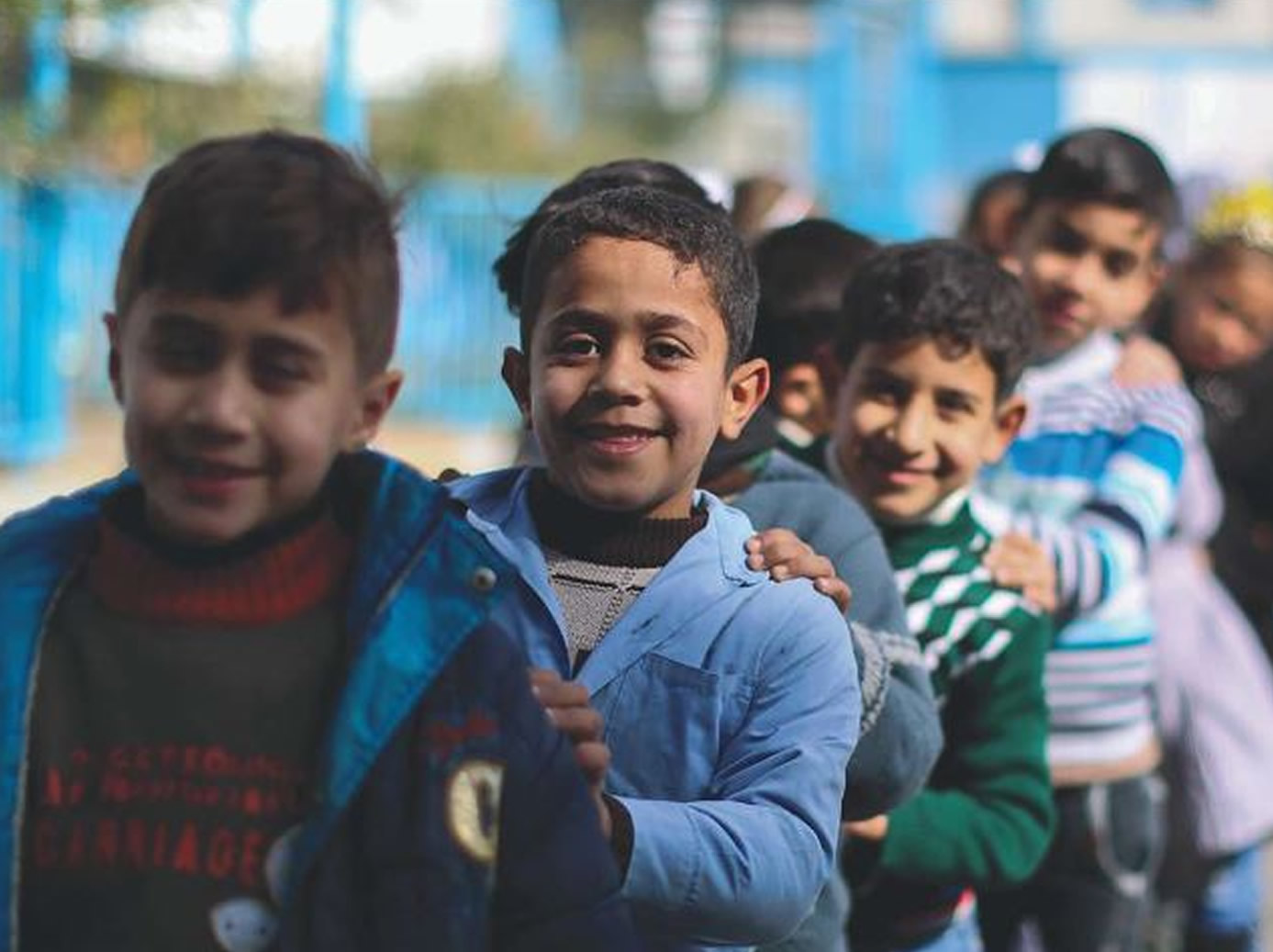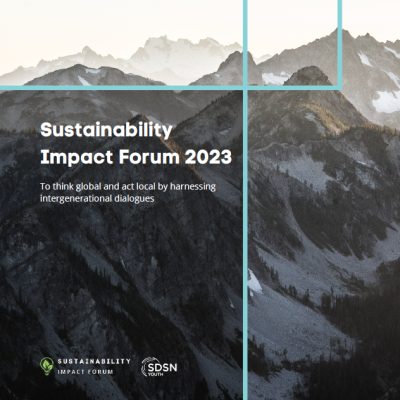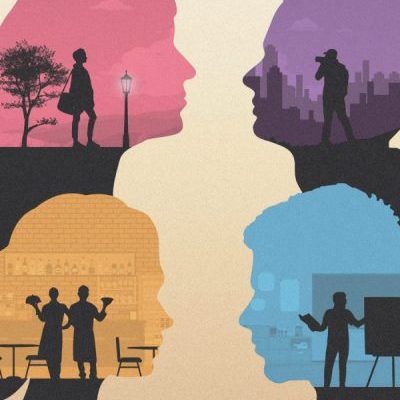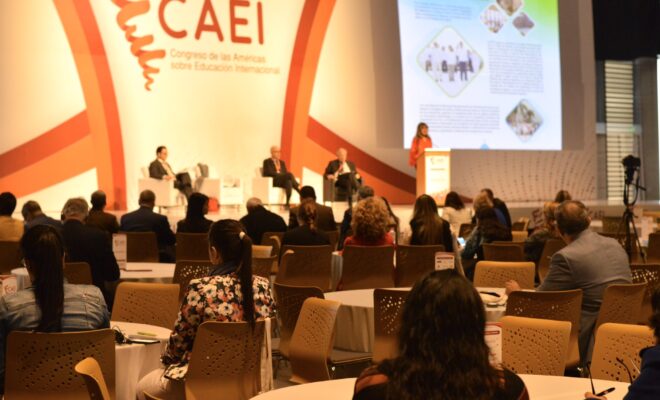The George Floyd case and racism in higher education systems and institutions

By Daniel Mato | The murder of George Floyd, suffocated by a police officer in the United States, has made the serious problem of racism and police violence in that country visible again. But this way of looking at it is too simplistic. It is necessary not to lose sight of the fact that that policeman was a university graduate, as well as the fact that his crime, which joined many other similar ones, was only one of the ways in which racism was expressed in that society. It cannot be omitted that this racism is historically constitutive of that society, and that it is structural, it permeates all its institutions and is reproduced through them.
But isn’t racism also constitutive of all Latin American societies? Is it not also structural in Latin American societies, permeating all its institutions and reproducing itself through them? Isn’t this also expressed in violent actions, including homicides, by police and other security forces, especially against indigenous and Afro-descendant people and communities? In many of these societies, aren´t at least some of the officers of the security forces also graduates of universities or other types of higher education institutions? Haven’t they and the junior components of these forces received human rights courses? Haven’t graduates and institutions of higher education participated in the delivery of these courses?
Isn’t racism in Latin American societies also expressed in other forms of institutional violence, often less evident, such as those that are exercised in health, education and justice systems and institutions? Don’t graduates of higher education institutions participate in these?
Is racism not also expressed, in various ways, in the training provided by universities and other institutions of higher education, for example, to those who will become senior technicians and professionals in fields such as law, health, architecture, engineering, economics and the most diverse social and humanistic disciplines? Does it not also express itself in the provision to those who will serve as teachers at all educational levels, where they will continue to tell their students the respective “official history” and advocate values that – judging by the results in sight- have not led to the building of satisfactorily democratic, socially and environmentally sustainable societies?
Unfortunately, all these questions must be answered in the affirmative. However, many members of our societies live without being aware of the existence of racism. This is because racism in these societies has been “naturalized”. For example, the same mass media in Argentina, Chile, Colombia, Guatemala, and Mexico, among others, that gave extensive coverage to the murder of George Floyd, and that did so by highlighting the racism of that society, omitted to do so, in most cases, in similar crimes committed in their respective countries, or ignored the racist nature of such crimes.
The authors of many of these press releases, the respective editors, and most of the media columnists, who analyzed this crime as if it were a problem exclusively “Made in USA”, are also university graduates, just like the cop who murdered George Floyd. There were other media that did link this racist murder with similar ones in our lands, but these were generally media with less impact on public opinion. Despite the existence of those other “points of view”, many people reproduced the interpretations of the most far-reaching media.
Why did this happen and why does it continue to happen? Because racism is a constituent element of our societies, and in a wider sense, of the world in which we live; and because it continues to be reproduced through various institutions, practices and discourses.
Racism is an ideology according to which human beings are classified into races, where some are believed to be superior to others that are believed to be morally and intellectually inferior. This ideology served as the basis for the colonial deployment of coalitions composed by some European monarchies, their armies and civil servants, economic power groups and leaders of institutionalized religions, which subjugated not only peoples from other continents, but also Europeans. In this part of the world, significantly named Latin America (denomination that affirms its European “heritage”), the new republican states far from ending this ideology were established upon it, and they reproduced it through racist policies and practices. For example, to end “barbarism” and ensure the advancement of “civilization”, successive governments (administrations of those states) continued to advance over the territories of indigenous peoples, distributed their lands among the political and economic power groups of which they were part, and commissioned the Catholic Church to “save the souls” of the survivors of those peoples dispossessed of territories, who were also forbidden to speak their languages, practice their forms of spirituality and sustain their food and health systems.
While practices of territorial dispossession persist, states have long been using other means to continue their “civilizing” mission. For example, they employ economic and social policies aimed at ensuring “progress” and “pulling out of backwardness” the still numerous indigenous and Afro-descendant communities that, despite territorial losses, continue trying to live in harmony with what the states have called “environment” and whose “preservation” they have only begun to worry about in the 1970s, so far without results. In addition, various cultural policies have been, and continue to be, key instruments in the reproduction of this ideology and its “naturalization”, for example, through the forced Spanishization of indigenous peoples and the associated glotticides. Educational systems and institutions (including those of higher education) have also contributed to the reproduction and naturalization of racism, and continue to do so, probably in ways that are unconscious for most of their members.
The multiple forms of racism and its naturalization
Today racism is so naturalized in our societies that it is mostly unconscious, to the point that the application of this concept is usually limited to events occurring in the United States or Europe, and in our midst, to explicit actions of “racial discrimination”, and among these, often only those that are very visible, or violent.
For example, the presence of racism is often not perceived in some verbal expressions so deeply rooted in our language that they have been recorded as forms of figurative language listed in the dictionary of the Royal Spanish Academy. This is the case, for example, of the expression “merienda de negros” (black people’s snack) used to refer to situations of “disorder and confusion”, and of the expression “se le subió el indio” (the Indian part got hold of him/her) as the equivalent of “rose in anger”. The reference to these two terms in particular is due to the fact that their use can be observed both in Spain and in virtually all Latin American countries, and that they even appear in the aforementioned dictionary, but there are many others that are used in some countries in particular.
The naturalization of racism means that it is not generally associated with events such as the fact that in our countries indigenous and Afro-descendant individuals and communities generally do not have equitable access to health services. It is clear from the national census data of our countries that children and adults die as a result of this, but it is not a cause of alarm for the majority of the population.
The naturalization of racism explains why racism is not usually associated with events such as the fact that the majority of the population is not indignant, but even finds it “necessary” for the “common good”, when communities of indigenous peoples are displaced from their ancestral territories to make the businesses of agricultural and mining corporations, or companies that promote tourism developments and “closed neighborhoods” possible. Similarly, this naturalization explains why the majority of the population is not outraged to see that these communities are not able to have their claims on the matter duly dealt with by “the Justice Service”, nor when, in face of the protests from these communities in search of justice, the public authorities send the “security forces” to “put order”, which often leads to abuse, torture and even murder. This naturalization operates in such a way that, if the aforementioned chain of injustices was not already a sufficient dose of racism, the same dominant media that tore their clothes off for the murder of George Floyd, presents those circumstances in such a way that they end up criminalizing the very victims of so many racist abuses. Then, the “public opinion” of a good part of the educated middle classes (including graduates from universities and other higher education institutions) repeats in chorus: What an outrage! These people don’t understand. They are backward, they are violent.
The serious problems I am pointing out here, and many others, are documented in reports by United Nations special rapporteurs and in documents by ECLAC – Economic Commission for Latin America and the Caribbean – available on the Internet. [1]
Although openly discriminatory behavior towards these individuals and communities is becoming less common in some countries in the region, there are historically accumulated disadvantages, institutional mechanisms and some dominant forms of common sense, which continue to reproduce inequities. These inequities are often imperceptible to other social sectors, which in some cases minimize their importance in the belief that other social groups also suffer discrimination.
In Latin America, problems of discrimination do not only affect individuals and communities of indigenous peoples and Afro-descendants. Various forms of racial discrimination and xenophobia also affect individuals and communities of Gypsy, Jewish and Muslim peoples, as well as immigrants of some nationalities in particular, with specificities that vary from country to country. Discrimination also tends to target individuals and groups who must live in very disadvantageous socio-economic situations, and who are represented as “poor” by the hegemonic media, a large part of the so-called “middle classes” and certain orientations of economic and social research and policies. Other serious forms of institutional and interpersonal discrimination and violence particularly affect women, and people with disabilities, or with diverse gender identities or sexual orientation. Discrimination is often compounded when the persons targeted have more than one “negative” attribute in the eyes of those who discriminate against them, such as, for example, being a black lesbian woman. Problems of discrimination are not limited to obvious violent acts; they also affect opportunities for education, employment and access to housing. These are all serious problems in all our societies. However, those that harm individuals and communities of indigenous peoples and Afro-descendants have centuries of history and – although transformed – continue to exist. Furthermore, and despite this, they tend to receive little attention from a large part of the population, public institutions, the media, and universities and other types of higher education institutions in their respective societies.
The naturalization of racism in Higher Education systems and institutions
Racism is a profound and naturalized problem in Latin American societies, and education systems bear a large part of the responsibility for this. Universities and other institutions of higher education, in particular, are responsible for training teachers at other levels of education, as well as professionals and technicians who consciously or unconsciously continue to reproduce various forms of racism. The responsibility for these events is not limited to higher education institutions, but includes all the instances and actors that when put together are called systems: the laws and policies that regulate their operation, the organizations that implement them and those that evaluate and accredit institutions and careers. However, the problem of racism is serious and widespread in our societies and its reproduction and naturalization involves higher education graduates, such as those who legislate and those who formulate and implement policies, among other occupations, from which they could at least try not to continue reproducing it.
A significant example of the naturalization of racism in higher education is the fact that while a good number of Latin American universities have adopted protocols for the prevention and attention of cases of discrimination and gender violence, as well as towards people with disabilities or with gender identities or sexual orientation not adjusted to the hegemonic “morality”, we have yet to see the existence of instruments of this type that specifically address the various ways in which racism affects indigenous peoples and people of African descent in and from these institutions. In other words, protocols aimed at ensuring prevention and attention to cases of discrimination against people, as well as the exclusions and disqualifications exercised in higher education systems and institutions regarding the languages, histories, world views, lore and knowledge systems, values and forms of spirituality of indigenous peoples and Afro-descendants. These protocols should also respond to the challenges of racism implicit in the absence or insufficiency of programs that favor the entry of students, teachers and other workers from these peoples, as well as policies that finance sustained experiences for research and links with their communities, as those that do exist for other social and economic actors. Some universities have already begun to discuss the need for such protocols, but so far, we are not aware that any have been adopted.
The inequalities that result from the contrast between attention to these other forms of discrimination and the neglect of those affecting these peoples are less visible forms of racism than personal discrimination, but no less serious. Moreover, the omission of ethical, professional and academic learning opportunities associated with the knowledge of these peoples’ contributions, such as the absence or deficiency of opportunities for bonding and sharing mutual knowledge with their individuals and communities, affects the quality of the education that these systems and institutions provide.
There are many graduates of universities and other higher education institutions who – consciously or unconsciously – play leading roles in the violation of the human rights of persons and communities of indigenous peoples and Afro-descendants. For example: lawyers with deficient ethical and historical training who are in charge of devising artifices to violate the territorial and environmental rights of these peoples’ communities for the benefit of landowners and agricultural, oil, mining and tourism development corporations. Health professionals, who lack training and intercultural experience in dealing with these peoples’ communities, assess their preventive and therapeutic knowledge. Economists, sociologists and other professionals with responsibilities in the design and execution of public policies who have not been trained to value their modalities of social and productive organization, decide on the construction of dams that flood their territories without foreseeing consequences.
Professionals in various fields who have been educated in contempt for the history of these peoples, their languages, values and knowledge systems, and who in the exercise of public office undermine their access to health, justice and education services. Businessmen and corporate authorities who, in spite of the fact that they are, in general terms, university graduates, lack ethical training and information about these peoples, to the extent that they violate their rights for the sake of profit. Security force officials and authorities, who in many countries of the region have graduated from universities or higher education institutions of the security forces, who have received such poor training in regard to the values and rights of these peoples and their members that they repeatedly engage in racist practices. The heads of the public bodies on which the security forces depend, who are also often university graduates, give racist orders to these forces.
The aforementioned problems should draw our attention to the poor quality of education that our higher education systems and institutions are providing. We need to reflect on them. It is not possible to accept uncritically that universities and other institutions of higher education continue to reproduce and naturalize racism. Nor is it acceptable that, in the twenty-first century, they are not proactively working to end it.
Racism not only creates problems of access, success and graduation of persons of indigenous peoples and Afro-descendants in higher education institutions; it also affects the quality of the education they provide, their role as shapers of public opinion and citizenship, and the quality of the technicians and professionals they train and the research they carry out.
Eradication of racism and anti-racist education
I think that the problems outlined above illustrate why it is not enough for higher education systems and institutions to be not racist. They must be anti-racist, they must educate against racism, they must be committed to eradicating racism within themselves and in the societies of which they are a part.
Fortunately, the need to act on this issue is already part of the agenda of a growing number of institutions and individuals, as was evident at the Regional Conference on Higher Education in Latin America and the Caribbean, held in Cordoba in June 2018 (CRES 2018).
More than five thousand representatives of higher education systems and institutions from all over the region participated in CRES 2018, including authorities from government agencies with competence in the matter, rectors and other authorities from universities and other institutions, networks of authorities and universities, specialists in the field, students and their federations, teachers and other workers and their unions. This significant meeting issued a final declaration that included a number of recommendations regarding racism, including the following:
“Higher education policies and institutions must proactively contribute to the dismantling of all mechanisms that generate racism, sexism, xenophobia and all forms of intolerance and discrimination. It is imperative that the rights of all population groups that are discriminated on the basis of race, ethnicity, gender, socio-economic status, disability, sexual orientation, religion, nationality and forced displacement, be guaranteed”.
“These changes should ensure the incorporation of these peoples and social groups’ worldviews, values, lore, know-how, language systems, forms of learning and modes of knowledge production, into higher education institutions”.
“It is imperative to recognize and value the epistemologies, modes of learning and institutional designs of indigenous peoples and Afro-descendants, rural communities and other socio-culturally differentiated communities”.
“Education is not only a human right but also a right of peoples. Latin American and Caribbean States and societies owe a significant historical debt to indigenous and Afro-descendent peoples. Although their rights are recognized in numerous international instruments and in most national constitutions, there is an alarming deficit in their effective application, including in higher education. Higher education institutions must guarantee the effective employment of their rights and educate the population in general, and particularly their communities, against racism and all forms of discrimination and related intolerance”. [2]
This declaration marks a milestone in the history of higher education in the region as it expresses progress in the denaturalization of racism in its field, and even outlines some key objectives. The challenge is to make them come true.
To achieve these objectives, it is recommendable to be careful with certain uses of the category “structural racism”. Because while it emphasizes the importance and depth of the problem, certain uses of it seem to visualize it as if it was an omnipresent phenomenon that is “everywhere”, and thus in no particular place. In order to make concrete progress in eradicating racism in higher education systems and institutions, it is necessary to disaggregate the category of ‘structural racism’ and to refine the analysis of the multiple ways in which it is expressed and reproduced in this field. To this end, it is necessary to evaluate specific institutional frameworks, norms, procedures, actors, subjectivities, institutional and personal practices, in terms of teaching, management, research, outreach and experiences of engagement with individuals and communities of these peoples.
There is a need to encourage research and participatory activities that promote reflection and debate leading to consensus on protocols aimed at ensuring the prevention of all forms of racism in higher education systems and institutions.[3]
It is necessary to identify and eradicate all of them, because in addition to the negativity inherent in each, they happen to be mutually reinforcing. In order to eradicate racism in this area, it is neither sufficient nor effective to have protocols that focus only on forms of personal racial discrimination. It is necessary to carry out studies and to promote debates and reflections that will make it possible to eradicate other forms of racism, such as the absence or insufficiency of programs that encourage the entry of students, teachers and other workers of indigenous peoples and Afro-descendants; as well as the exclusions and disqualifications of their languages, histories, lore and knowledge systems; and also the absence or insufficiency of support for research and links with their communities.
All of us who are part of the higher education systems and institutions are responsible for the persistence of these problems in our field, whether by action or omission. It is our responsibility to transform these systems and institutions in order to contribute – from them – to build societies that are free of racism; societies that are democratic, equitable and inclusive, capable of feeding on the cultural diversity that characterizes them. Only in this way will we be able to prevent murders such as that of George Floyd and others of a similar nature, which continue to occur, both in the United States and throughout Latin America, and also to end other injustices that are the consequence of various forms of racism. The key questions are: In what ways can higher education systems and institutions contribute to end racism? How can each one of us contribute to this?
NOTES
– Simultaneously published on the IESALC portal and as No. 21 of the Colección Apuntes of the Initiative for the Eradication of Racism in Higher Education, of the UNESCO Chair in Higher Education and Indigenous and Afro-descendant Peoples in Latin America, National University of Tres de Febrero – UNTREF.
– Daniel Mato is principal researcher of the National Council for Scientific and Technical Research – CONICET and director of the UNESCO Chair in Higher Education and Indigenous and Afro-descendant Peoples in Latin America, National University of Tres de Febrero – UNTREF, Buenos Aires, Argentina.
[1] See for example:
- Economic Commission for Latin America and the Caribbean (ECLAC) / Fund for the Development of Indigenous Peoples of Latin America and the Caribbean (FILAC) (2020), Indigenous peoples of Latin America – Abya Yala and the 2030 Agenda for Sustainable Development: tensions and challenges from a territorial perspective, Project Documents (LC / TS.2020 / 47). Available: http://www.filac.org/wp/wp-content/uploads/2020/06/Los-Pueblos-Indigenas-de-Am%C3%A9rica-lLatina-y-la-Agenda-2030-para-el-Desarrollo-Sostenible.pdf)
- UN (2005) Report of the Special Rapporteur on the situation of human rights and fundamental freedoms of indigenous people, Rodolfo Stavenhagen (E / CN.4 / 2005/88). Available: https://documents-dds-ny.un.org/doc/UNDOC/GEN/G04/169/40/PDF/G0416940.pdf?OpenElement
- UN (2010) Report of the Working Group of experts on people of African Descent. Visit to Ecuador (A / HRC / 13/59). Available: https://documents-dds-ny.un.org/doc/UNDOC/GEN/G10/102/07/PDF/G1010207.pdf?OpenElement
- UN (2013) Report of the Working Group of Experts on People of African Descent on its twelfth session. Mission to Panama (A/HRC/24/52/Add.2). Available: https://documents-dds-ny.un.org/doc/UNDOC/GEN/G13/164/35/PDF/G1316435.pdf?OpenElement
- UN (2014) Report of the Working Group of Experts on People of African Descent on its fourteenth session. Mission to Brazil (A / HRC / 27/68 / Add). Available: https://documents-dds-ny.un.org/doc/UNDOC/GEN/G14/168/64/PDF/G1416864.pdf?OpenElement
- ONU (2019) Report of the Working Group of Experts on People of African Descent. Visit to Argentina (A/HRC/42/59/Add.2). Disponible: https://documents-dds-ny.un.org/doc/UNDOC/GEN/G19/242/57/PDF/G1924257.pdf?OpenElement
[2] The CRES 2018 Final Declaration is available at: http://espacioenlaces.org/declaracion-cres-2018/
[3] In 2018, the UNESCO Chair on Higher Education and Indigenous and Afro-descendent Peoples, in collaboration with more than twenty universities of ten Latin American countries, launched the Initiative for the Eradication of Racism in Higher Education, whose website, among other useful resources to promote reflection and debate on racism in higher education, offers seventy micro-videos, twenty short and easy-to-read texts, and numerous publications on experiences in this field (http://unesco.untref.edu.ar/ ).
Read the version of this article in portuguese “O caso george floyd e o racismo nos sistemas e instituições de ensino superior” in Portuguese translated by the Universidade Federal do Rio Grande do Norte.
RELATED ITEMS








